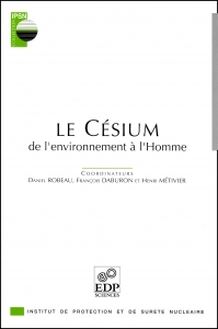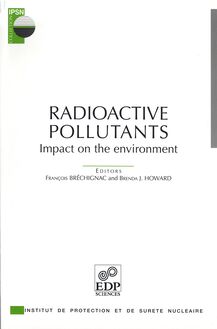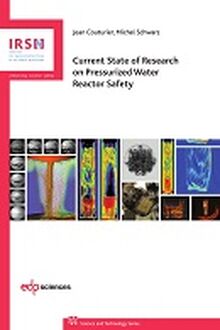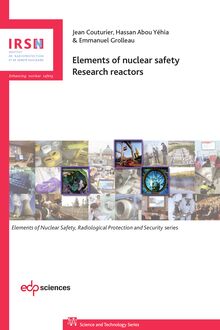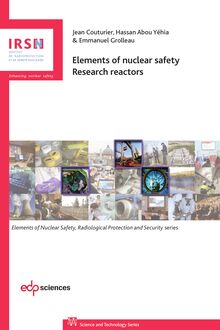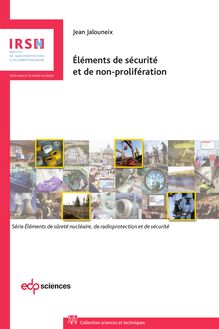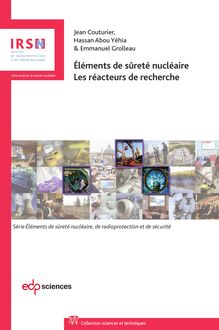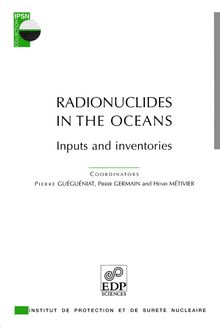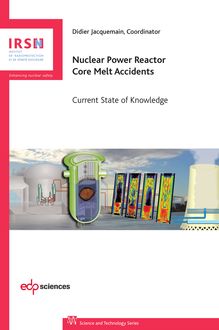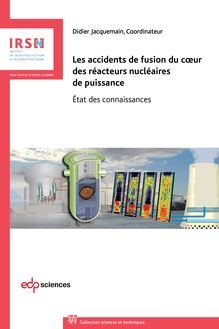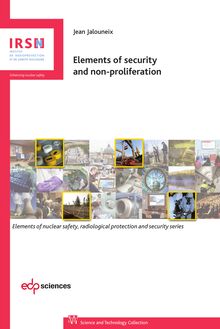-
 Univers
Univers
-
 Ebooks
Ebooks
-
 Livres audio
Livres audio
-
 Presse
Presse
-
 Podcasts
Podcasts
-
 BD
BD
-
 Documents
Documents
-
- Cours
- Révisions
- Ressources pédagogiques
- Sciences de l’éducation
- Manuels scolaires
- Langues
- Travaux de classe
- Annales de BEP
- Etudes supérieures
- Maternelle et primaire
- Fiches de lecture
- Orientation scolaire
- Méthodologie
- Corrigés de devoir
- Annales d’examens et concours
- Annales du bac
- Annales du brevet
- Rapports de stage
La lecture à portée de main
Découvre YouScribe en t'inscrivant gratuitement
Je m'inscrisElements of nuclear safety , livre ebook
Découvre YouScribe en t'inscrivant gratuitement
Je m'inscrisEn savoir plus
En savoir plus

Description
This publication gives a global overview of the diversity and complementarity of research reactors, some of which have been or are still being used to conduct experiments that are essential for the development and operation of nuclear power reactors, including in relation to safety issues. This work highlights the many uses of these reactors, which have very different designs, use highly varied quantities of radioactive substances with varying levels of risk for safety and radiation protection, and which — in many cases because they are old or have been shut down — require appropriate measures to control the ageing or obsolescence
of some of their equipment, as well as, on an organisational and human level, to ensure that they continue to be operated safely. For some research reactors, safety and radiation protection aspects must be considered, taking into account that two types of operators are present at the same time within these reactors: reactor operating personnel and operators in charge of experimental devices using neutrons from the reactor for fundamental or applied research purposes. There are two specific chapters on the safety standards established under the aegis of the IAEA for research reactors and on serious accidents, notably those involving criticality and reactivity, in research reactors. The second part of the work focuses on French research reactors, including the regulations and official documents applicable to these reactors, on lessons learned in France from significant events and accidents — as well as abroad, such as the Fukushima Daiichi nuclear power plant accident in 2011 — on the consideration of reactivity accidents in the design of French research reactors, and on the ten-yearly safety reviews carried out in France.
Sujets
Informations
| Publié par | EDP Sciences |
| Date de parution | 06 octobre 2019 |
| Nombre de lectures | 0 |
| EAN13 | 9782759824267 |
| Langue | English |
| Poids de l'ouvrage | 4 Mo |
Informations légales : prix de location à la page 0,0005€. Cette information est donnée uniquement à titre indicatif conformément à la législation en vigueur.
Extrait
-
 Univers
Univers
-
 Ebooks
Ebooks
-
 Livres audio
Livres audio
-
 Presse
Presse
-
 Podcasts
Podcasts
-
 BD
BD
-
 Documents
Documents
-
Jeunesse
-
Littérature
-
Ressources professionnelles
-
Santé et bien-être
-
Savoirs
-
Education
-
Loisirs et hobbies
-
Art, musique et cinéma
-
Actualité et débat de société
-
Jeunesse
-
Littérature
-
Ressources professionnelles
-
Santé et bien-être
-
Savoirs
-
Education
-
Loisirs et hobbies
-
Art, musique et cinéma
-
Actualité et débat de société
-
Actualités
-
Lifestyle
-
Presse jeunesse
-
Presse professionnelle
-
Pratique
-
Presse sportive
-
Presse internationale
-
Culture & Médias
-
Action et Aventures
-
Science-fiction et Fantasy
-
Société
-
Jeunesse
-
Littérature
-
Ressources professionnelles
-
Santé et bien-être
-
Savoirs
-
Education
-
Loisirs et hobbies
-
Art, musique et cinéma
-
Actualité et débat de société
- Cours
- Révisions
- Ressources pédagogiques
- Sciences de l’éducation
- Manuels scolaires
- Langues
- Travaux de classe
- Annales de BEP
- Etudes supérieures
- Maternelle et primaire
- Fiches de lecture
- Orientation scolaire
- Méthodologie
- Corrigés de devoir
- Annales d’examens et concours
- Annales du bac
- Annales du brevet
- Rapports de stage
